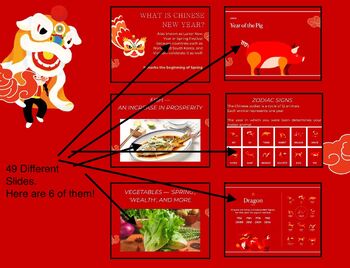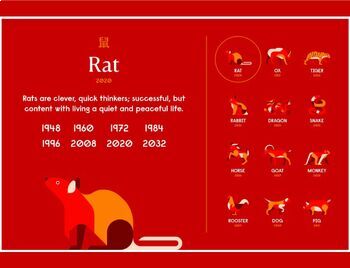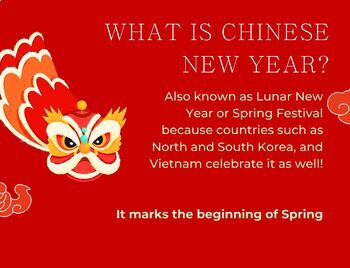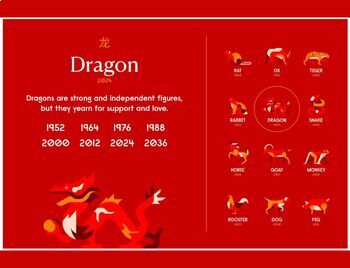Chinese New Year Bulletin Board
- Zip
Description
Chinese New Year Bulletin Board
49 Color Slides
What is a Chinese New Year?
Origins
Spring Festival
Decorations
Red Envelope
Food
Rules
Traditional Greetings
Zodiac Signs
Includes:
All Printable:
PowerPoint
JPEG of all slides
If there is any information that is not correct, please notify me so I can correct it and redistribute it. If you feel other influential artists should be included, I can include them as well.
All of the information was current at the time of the creation of the document.
___________________
Chinese New Year, also known as the Spring Festival, is the most important traditional festival celebrated by the Chinese people. It marks the beginning of the lunar new year and is based on the Chinese lunar calendar. The festival usually falls between January 21 and February 20, depending on the lunar calendar's timing.
Origins:
The origins of Chinese New Year can be traced back thousands of years to ancient China. The festival has roots in agrarian societies where people celebrated the end of winter and the beginning of spring, symbolizing renewal and the promise of a good harvest. Over time, it incorporated cultural, religious, and family customs.
Spring Festival:
The Chinese New Year is often referred to as the Spring Festival, as it heralds the arrival of spring and the renewal of life. It is a time when families come together to celebrate, pay respects to ancestors, and wish for good fortune in the coming year.
Decorations:
Homes and streets are adorned with red decorations during Chinese New Year. Red symbolizes good luck and prosperity in Chinese culture. Traditional decorations include red lanterns, couplets with auspicious phrases, and images of the Chinese zodiac animals for the current year.
Red Envelope (Hong Bao):
Red envelopes, known as "hong bao" or "lai see," are a popular tradition during Chinese New Year. Elders and married couples give these red envelopes containing money to children and unmarried individuals as a gesture of good luck and blessings for the new year.
Food:
Food plays a significant role in Chinese New Year celebrations. Families gather for a reunion dinner on New Year's Eve, and a variety of special dishes are prepared. Symbolic foods like fish, dumplings, and glutinous rice cakes are commonly enjoyed for their auspicious meanings, such as wealth, prosperity, and good luck.
Rules:
Certain customs and superstitions are observed during Chinese New Year. For example, cleaning the house before the festival is considered important to sweep away any bad luck from the previous year. However, sweeping on New Year's Day is avoided, as it is believed to sweep away good fortune.
Traditional Greetings:
People exchange greetings and well-wishes during Chinese New Year. Common greetings include "Gong Xi Fa Cai" (Wishing you prosperity), "Xin Nian Kuai Le" (Happy New Year), and "Wan Shi Ru Yi" (May everything go as you wish).
Zodiac Signs:
The Chinese zodiac is based on a twelve-year cycle, with each year associated with an animal sign. These signs are Rat, Ox, Tiger, Rabbit, Dragon, Snake, Horse, Goat, Monkey, Rooster, Dog, and Pig. Each year is also linked to one of the five elements: Wood, Fire, Earth, Metal, and Water. People believe that the animal and element of the year influence personalities and destiny.
Overall, Chinese New Year is a time of joy, family reunions, and cultural celebrations, embodying the rich traditions and values of Chinese culture.Chinese New Year Traditions





